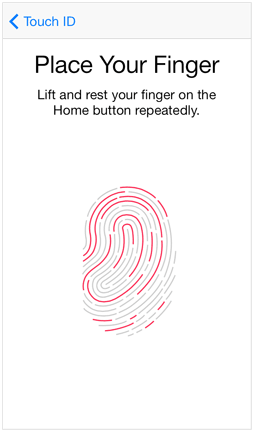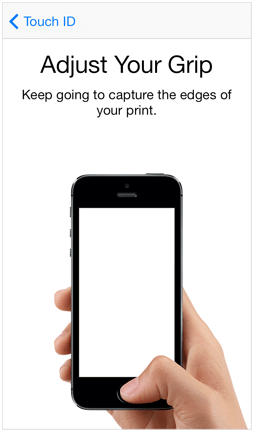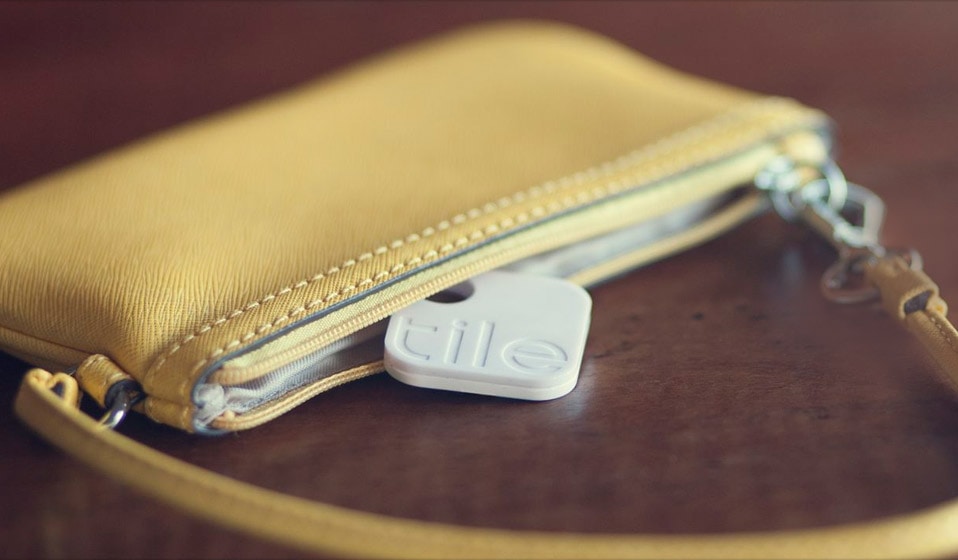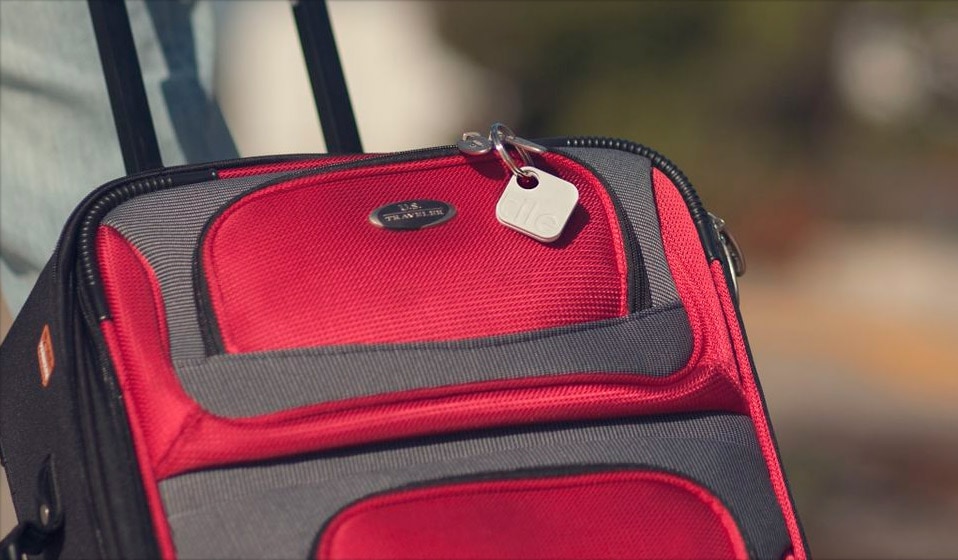Real life is imitating science fiction with the latest Apple development, seen on the brand new iPhone 5s. Fingerprint scanning, or “Touch ID” as Apple has dubbed it, is the latest in smartphone protection and convenience. This incredible technology has the world abuzz – with many people marveling at how far mobile phones have come, some raising concerns over security issues and a massive amount of consumers clamoring to be among the first to own a 5s.
Touch ID is centered on the iPhone’s home button, which on the 5s is now made of sapphire crystal, a material similar to glass that protects the sensor underneath. Sapphire crystal also acts as a lens so the sensor can focus on your fingerprint. Around the edge of the home button is a steel ring, which helps it to detect your finger, prompting the sensor to read the ridges and patterns in your print and function accordingly.

When initially setting up your new iPhone 5s, you’ll be required to register your fingerprint on the device by touching it to the home button. From then on, a match will unlock your phone. It can also be used in place of a traditional password to make purchases through iTunes, iBooks and the Mac App Store.
While some people have voiced concerns over the level of security a fingerprint provides, Apple ensures that it is both incredibly safe and remarkably convenient. A fingerprint, according to the computing giant, is one of the best passwords going. You always have it with you, you can’t forget it, and no two are alike.
Fingerprint data stored within the iPhone 5s is encrypted and stored securely within that smartphone’s lightning-fast new A7 chip, where it is locked away from everything but the touch sensor itself. It is worth noting, for those who do have concerns, that the iPhone 5s does not store images of fingerprints, and print data isn’t kept in Apple’s servers or on the iCloud. It is also not available to app developers.
New technology always excites would-be hackers. With the iPhone 5s, much like any other computing device, there is always a chance someone may attempt to crack the encrypted chip. However, a fingerprint provides an exceptional level of security of that is the case. Unlike cracking traditional passwords, there is no way to reverse engineering fingerprint data, making the data stored within your smartphone incredibly safe.

Furthermore, for those who may raise security concerns likely based on something from films or television, it should also be pointed out that artificial fingers molded with stolen fingerprints won’t work to unlock the iPhone 5s. More morbidly, neither will a severed finger! The sensor under the sapphire crystal home button doesn’t read the dead level on the outside of your finger. Rather, it detects prints based on sub-epidermal layers of skin. That makes it effective only with real fingers – still attached to the rest of your body.
Apple advises that Touch ID technology is extremely accurate, and the sensor on your iPhone 5s will get better the more you use it. While it can read multiple fingers in any orientation, keep in mind that it’s not effective with fingers that are sweaty, have had lotion freshly applied or are marred with burns or scars.
At present, the only other smartphone on the market with fingerprint technology is Motorola’s Atrix Android phone, which has been out since 2011. However, it seems that many people have either forgotten or just don’t know about it, as the hype over the 5s has far overshadowed that fact. Even Motorola seems to have forgotten they offer it, judging by a recent tweet poking fun at consumers getting excited about the new 5s. Given the excitement over Touch ID, though, it is likely that Apple’s main competitors, such as Samsung, may follow suit and come out with something similar soon.
In the meantime, with the iPhone 5s’s Touch ID, Apple has shown once again that they can indeed still innovate.



